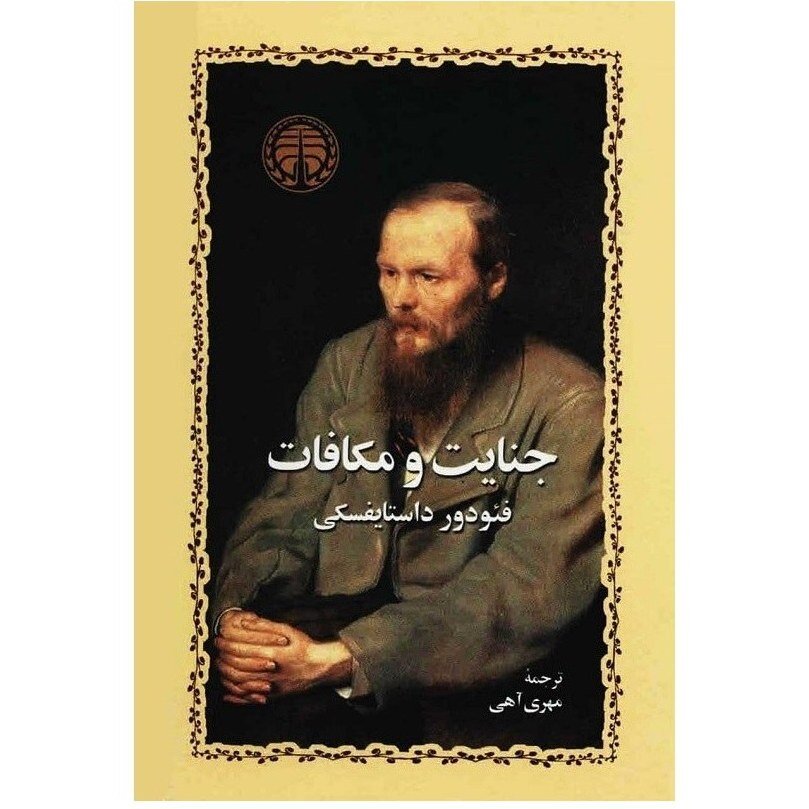Persian version of “Crime and Punishment” republished

TEHRAN- The 18th edition of a Persian translation of the Russian author Fyodor Dostoevsky’s 1866 novel “Crime and Punishment” has recently been released by the Kharazmi Publications in Tehran.
Translated by Mehri Ahi, the first edition of the Persian translation was published in 1972.
“Crime and Punishment” is considered Dostoevsky’s second major novel after his return from ten years in Siberia and marks a turning point in his literary career, often regarded as the first of his mature works and one of the greatest classics of world literature.
The story centers on Rodion Raskolnikov, an impoverished ex-law student living in Saint Petersburg. He is deeply troubled and isolated, brooding over a radical theory that certain extraordinary individuals have the right to commit crimes if it benefits humanity.
Raskolnikov devises a plan to murder an unscrupulous pawnbroker, whom he views as a parasite on society, believing that her money could help him achieve greatness. After much internal debate, he carries out the murder but is overwhelmed by guilt, paranoia, and moral confusion.
The novel explores his psychological torment and the consequences of his crime, highlighting themes of morality, redemption, and the nature of evil.
Dostoevsky wrote the novel under financial pressure, suffering from debts and the need to support his family after his brother’s death. Initially, he conceived “Crime and Punishment” as a story or novella exploring the dangers of radical ideas and nihilism, intending to critique the dangerous philosophy that justified crime in the name of higher goals.
Over time, he reworked the story into a full-length novel, shifting from a first-person narrative to a third-person perspective to better capture Raskolnikov’s complex psychology. The process involved multiple drafts and revisions, as Dostoevsky experimented with different narrative structures, including diary entries and confessional formats.
The novel’s plot unfolds in several parts. In the first, Raskolnikov plans and commits the murder, killing the pawnbroker and her sister. He then falls into a feverish state of guilt, leading to suspicion from the police. Despite his efforts to hide his involvement, he is haunted by his crime. He encounters various characters, including the kind but naïve Razumikhin, the tragic Marmeladov and his daughter Sonya—who becomes a symbol of faith and redemption—and the mysterious Svidrigailov, whose dark motives complicate Raskolnikov’s moral journey.
Throughout the story, Dostoevsky explores Raskolnikov’s internal conflict, his philosophical justifications, and his eventual acknowledgment of moral responsibility. Raskolnikov’s interactions with the police detective Porfiry Petrovich reveal the growing suspicion and psychological cat-and-mouse game. The narrative also delves into the suffering of other characters, such as Katerina Ivanovna and her children, emphasizing themes of poverty, guilt, and salvation.
Ultimately, Raskolnikov confesses his crime, driven by Sonya’s unwavering faith and his own moral awakening. He is sentenced to eight years of penal servitude in Siberia, where his spiritual redemption begins. The novel concludes with the hope that Raskolnikov’s suffering and love will lead to moral regeneration, highlighting Dostoevsky’s belief in the possibility of salvation through suffering and faith.
The first parts of “Crime and Punishment” published in “The Russian Messenger” in early 1866 gained widespread popularity, marking it as a literary sensation in Russia that year.
While Tolstoy’s “War and Peace” was also serialized at the same time, critics divided in their views. Conservative critics expressed sympathy for the novel’s depiction of a troubled youth, while radicals saw it as a reflection of social issues like poverty.
Later, the Symbolist movement reevaluated the novel’s spiritual themes, viewing Sonya as embodying divine wisdom and Raskolnikov as a “son of Earth” alienated from his source of strength. Philosophers saw it as illustrating the dangers of human hubris and self-deification.
The novel influenced 20th-century movements such as psychoanalysis and existentialism, with thinkers like Freud, Sartre, and Camus recognizing its profound impact.
There have been over 25 adaptations of “Crime and Punishment” in film and television. Notable films include the 1923 silent version by Robert Wiene, the 1935 French and American versions, the 1956 French film, the 1970 Soviet adaptation, and the 2002 Russian film. TV adaptations include BBC serials from 1979 and 2002, the 2007 Russian series, and the 2024 streaming series directed by Vladimir Mirzoyev. These adaptations reinterpret the story across different eras and settings, showcasing its enduring relevance.
SAB/
Leave a Comment